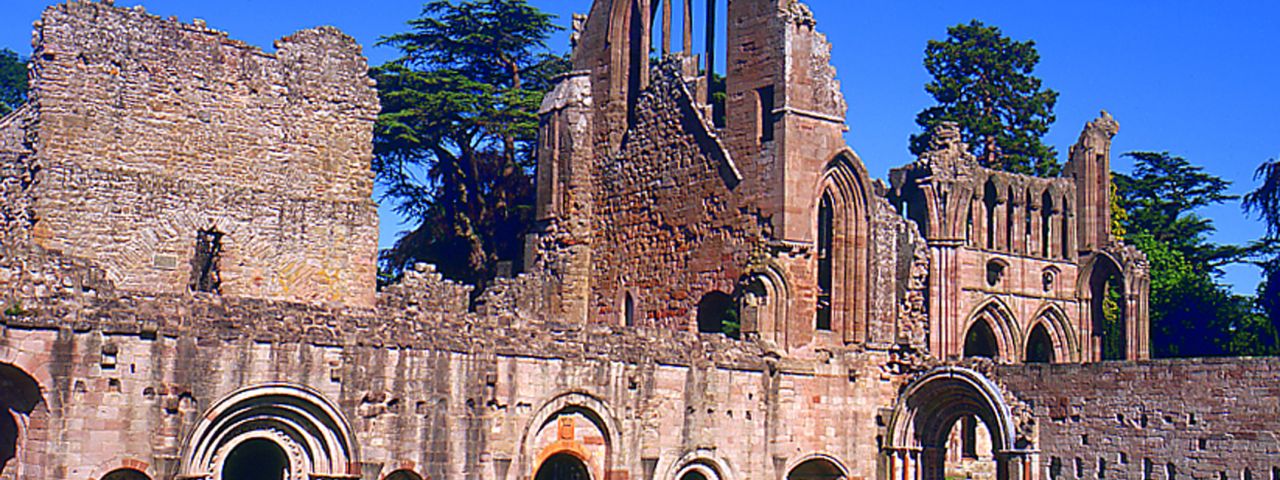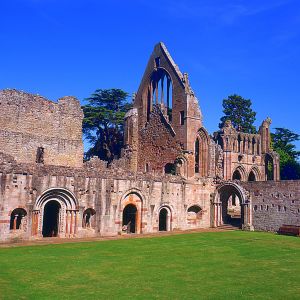Dryburgh Abbey
Sightseeing attraction | Melrose | Scotland | United Kingdom
History of Dryburgh Abbey
Dryburgh Abbey is an impressive monastery ruin on the banks of the River Tweed in the Scottish Borders, near the town of Melrose. The monastery was founded in 1150 by Hugh de Moreville, the Constable of Scotland at the time and Lord of Lauderdale. He invited the Premonstratensian canons from Alnwick Priory in England to settle in this idyllic setting.
Gothic architecture in Scotland
History
Ruins by the River Tweed
Despite its peaceful location, the abbey was not spared from conflicts. In 1322, it was burned down by the troops of Edward II after they heard the abbey bells ringing as they were retreating. Further destruction followed in 1385 by the army of Richard II. Despite these setbacks, the abbey flourished in the 15th century. However, with the Protestant Reformation of 1560, monastic life came to an end, and by 1584, only two monks remained alive.
Significance of Dryburgh Abbey
Architecture and Layout
Features of the abbey ruins
The ruins of Dryburgh Abbey are an outstanding example of Gothic architecture in Scotland. Particularly noteworthy are the warm, pink sandstone transepts flanking the choir. The cloister still conveys a sense of seclusion and tranquility. A highlight is the 13th-century chapter house, with its painted wall plaster and excellent acoustics still intact to this day. Other notable structures include the warming room and dormitory in the east wing of the complex.
Later History and Significance
In 1786, David Erskine, the 11th Earl of Buchan, acquired the abbey grounds. He worked to preserve the ruins and created formal gardens around the abbey. Additionally, he erected an obelisk south of the abbey to commemorate its founding by Hugh de Moreville.
The abbey became the final resting place of significant figures, including Sir Walter Scott, the famous Scottish writer, and Douglas Haig, a prominent British Field Marshal of World War I.




































































































































































